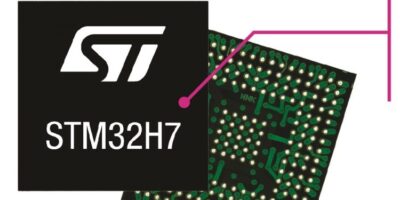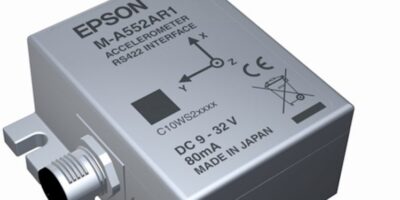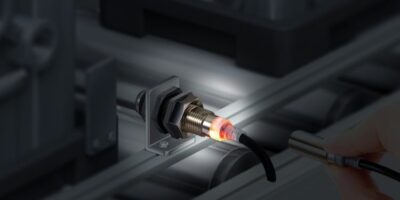Claimed to be the industry’s highest-performing Arm Cortex-M general-purpose microcontrollers, the STM32H7 devices combined dual-core operation with power-saving features and enhanced cyber protection, says STMicroelectronics.
The microcontrollers use a 480MHz version of the Cortex-M7, the highest performing member of the Cortex-M family and add a 240MHz Cortex-M4 core. The microcontrollers are based on ST’s smart architecture and have its efficient L1 cache and adaptive real-time ART Accelerator, to set new speed records at 1327 DMIPS and 3224 CoreMark executing from embedded Flash.
ST’s Chrom-ART Accelerator boosts graphics performance, while each core operates in its own power domain and can be turned off individually when not needed, to maximise power efficiency.
Developers can upgrade existing applications using the two cores, for example, adding a sophisticated user interface to a motor drive, formerly hosted on a single-core Cortex-M4, by migrating legacy code to the STM32H7 Cortex-M4 with the new graphics user interface (GUI) running on the Cortex-M7. Another example is to boost application performance by offloading intensive workloads such as neural networks, checksums, DSP filtering, or audio codecs.
The dual-core architecture also helps simplify code development and accelerate time to market in projects where user-interface code may be developed separately from real-time control or communication features.
STM32H7 microcontrollers have pre-installed keys and native secure services including Secure Firmware Install (SFI). SFI lets customers order standard products anywhere in the world and have the encrypted firmware delivered to an external programming company without exposing unencrypted code. Other protection includes built-in support for Secure Boot and Secure Firmware Update (SB-SFU) to protect over the air (OTA) upgrades and patches.
The STM32H7 microcontrollers have up to 2Mbyte flash and 1Mbyte SRAM on-chip to simplify the design of smart objects in industrial, consumer, and medical applications with real-time performance or artificial intelligence (AI) processing requirements. The Cortex-M7 level 1 cache and parallel and serial memory interfaces offer unlimited and fast access to external memory, adds ST.
The microcontrollers are also characterised by error code correction (ECC) for all flash and RAM to increase safety, multiple advanced 16-bit ADCs, external ambient-temperature range up to 125 degrees C allowing use in severe environments, an Ethernet controller and multiple FD-CAN controllers and ST’s high-resolution timer for generating precision waveforms.
STM32H7 dual-core microcontrollers are entering production and samples are available now.






